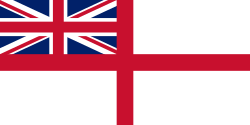USS Long Island (CVE-1)
 | |
| Základní údaje | |
|---|---|
| Typ | eskortní letadlová loď |
| Třída | Long Island |
| Číslo trupu | CVE-1 |
| Uživatelé | |
| Jméno podle | Long Island |
| Zahájení stavby | 7. července 1939 |
| Spuštěna na vodu | 11. ledna 1940 |
| Uvedena do služby | 2. června 1941 |
| Osud | sešrotována, 1977 |
| Takticko-technická data | |
| Výtlak | 13 700 t |
| Délka | 150 m |
| Šířka | 21,2 m |
| Ponor | 7,8 m |
| Pohon | 1 dieselový motor |
| Rychlost | 16,5 uzlů (30,6 km/h) |
| Posádka | 970 důstojníků a námořníků |
| Výzbroj | 1× 127mm kanón 2× 76mm kanón |
| Letadla | 30 |
USS Long Island (CVE-1) byla eskortní letadlová loď Námořnictva Spojených států amerických, která byla přijata do služby v červnu 1941. Jednalo se o jednu ze dvou jednotek třídy Long Island.
Výzbroj
Long Island byla vyzbrojena jedním 127mm kanónem a dvěma 76mm kanóny.
Galerie
Odkazy
Reference
V tomto článku byl použit překlad textu z článku USS Long Island (CVE-1) na anglické Wikipedii.
Související články
Externí odkazy
 Obrázky, zvuky či videa k tématu USS Long Island na Wikimedia Commons
Obrázky, zvuky či videa k tématu USS Long Island na Wikimedia Commons
Média použitá na této stránce
Crewmen spotting a Grumman F4F-4 Wildcat on the hangar deck of the U.S. Navy escort carrier USS Long Island (AVG-1), 17 June 1942. Several other F4F-4s are present, as are Curtiss SOC-3A Seagull scout-observation planes. All are from Auxiliary Scouting Squadron 1 (VGS-1).
The U.S. Navy escort carrier USS Long Island (AVG-1) moored at Naval Air Station North Island, California (USA), on 2 June 1942, shortly before she sortied with Task Force 1 (TF-1) under Vice Admiral William S. Pye. Aircraft on deck include six Grumman F4F-4 Wildcat and three Curtiss SOC-3A Seagull of Auxiliary Scouting Squadron 1 (VGS-1).
The U.S. Navy escort carrier USS Long Island (AVG-1) under conversion at the Newport News Shipbuilding & Drydock Co. yard, Newport News, Virginia (USA), on 1 April 1941. She had received the name Long Island on 31 March 1941. Note the flight deck under construction and the temporary retention of her neutrality markings. Her original name Mormacmail (a type C3-S-A1 freighter of Mooremack Lines) is still painted on her stern. The lighter YC-301 is visible in the left background.
The U.S. Navy escort carrier USS Long Island (CVE-1) underway in in Puget Sound, Washington (USA), on 11 February 1944. She is painted in Camouflage Measure 32, Design 9A.
A U.S. Navy Curtiss SOC-3A Seagull of Auxiliary Scouting Squadron 1 (VGS-1) landing on the escort carrier USS Long Island (AVG-1) on 17 June 1942. Note the bomb (or anti-submarine depth bomb) carried on the plane's centerline rack, and the arresting gear wires on the carrier's flight deck.
The U.S. Navy escort carrier USS Long Island (CVE-1) underway in San Francisco Bay, California (USA), on 10 June 1944, photographed by a plane from Naval Air Station Alameda. She has 21 Grumman F6F Hellcat fighters, 20 Douglas SBD Dauntless scout bombers and two Grumman J2F Duck utility planes parked on her flight deck. The ship is painted in Camouflage Measure 32, Design 9A.
The Flag of the United States Navy, as defined in Executive Order 10812 of April 24, 1959. The design is described there as:
The flag for the United States Navy is 4 feet 4 inches hoist by 5 feet 6 inches fly, of dark blue material, with yellow fringe, 2½ inches wide. In the center of the flag is a device 3 feet and 1 inch overall consisting of the inner pictorial portion of the seal of the Department of the Navy (with the exception that a continuation of the sea has been substituted for the land area), in its proper colors within a circular yellow rope edging, all 2 feet 6 inches in diameter above a yellow scroll inscribed "UNITED STATES NAVY" in dark blue letters.
The U.S. Navy flag is used for display purposes at ceremonies, parades, and other public functions where the U.S. Navy has an official presence, usually being carried by an honor guard on ceremonial occasions. It is not used for outdoor, fixed (permanent) purposes, and is not flown on Navy ships. Versions without fringe and different dimensions seem to be common, though it appears they are not technically the official U.S. Navy flag, as the executive order has not been amended.
Prior to 1959, the Navy Infantry Battalion flag was used to represent the U.S. Navy.
For more information, see the Navy's flag history page, SeaFlags, Flags of the World, U.S. Navy document NTP 13(B) [1], section 1710, and Navy regulation OPNAVINST 10520.1 (which replaced a similar SECNAVINST 10520.2D regulation from 1974).The U.S. Navy escort carrier USS Long Island (ACV-1) underway with a mixed cargo of airplanes and stores on her flight deck, 25 May 1943. The planes include Grumman F4F-4 Wildcat, Douglas SBD Dauntless and Grumman TBF-1 Avenger types. She was repainted in Camouflage Measure 21.
The U.S. Navy escort carrier USS Long Island (CVE-1) underway in San Francisco Bay, California (USA), on 10 June 1944, photographed by a plane from Naval Air Station Alameda. She has 21 Grumman F6F Hellcat fighters, 20 Douglas SBD Dauntless scout bombers and two Grumman J2F Duck utility planes parked on her flight deck. The ship is painted in Camouflage Measure 32, Design 9A.

















